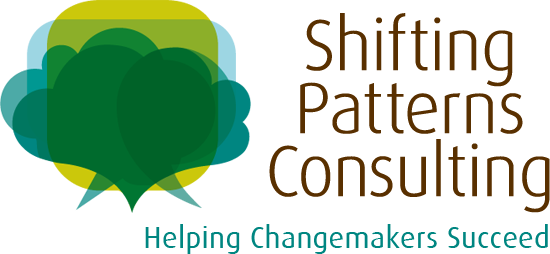In early March I participated in a video shoot for Netwalking that exemplified how movement can facilitate collaboration. Having a connection to Jessica and being an entrepreneur were commonalities that served as a starting point for getting to know others involved in the video shoot better. Although this kind of conversation could have taken place at a coffee shop, what made it memorable was the ease and enjoyment of conversing while walking around some of Washington, DC’s most scenic areas.
Some of the ways in which walking and other physical activities can enhance how we work together include:
· Idea Generation and Problem Solving: Neuroscientistshave found that creating experiences where our brain is less likely to predict what will happen next, like interacting with people we don’t know well, being in a different environment, or participating in new activities, stimulates creative thinking. However, activities, like walking meetings, are better suited to divergent thinking, such as exploring possible solutions to a problem. During a walk-and-talk on a nature trail with staff at a nonprofit I was consulting with, the experience of practicing self-care prompted a discussion about ideas for making this a regular part of their work, which led to an expansion of their benefits to include an employee assistance program.
· Reduce Boundaries Involving Power and Status: Walking side-by-sidecan make it easier for people to relate to each other when there are differences in authority. Being in a more social environment can also foster candid conversations. Each year Opportunity Collaborationhosts an annual gathering for professionals who are committed to poverty alleviation. Unlike traditional conferences, name tags do not include titles and delegates are encouraged to meet each other serendipitously while participating in outdoor activities. As a delegate I appreciated being in an environment that made it easier to meet and have meaningful conversations with other delegates instead of more transactional conversations that tend to take place at traditional networking events.
· Flow more easily between people and conversations: Moving around more freely, as opposed to being in a crowded room or around a table, can make it easier to meet and get to know the people you’re with. While facilitating a meeting for leaders of a regional business association they discovered a common interest in hiking. This sparked a decision to organize what has become an annual social activity that combines exercise in the midst of fall foliage. As a participant in this and other hikes I’ve enjoyed to get to know a group of people in the span of an afternoon, particularly when variations in my pace place me next to different people making it easier to strike up a conversation.
If the benefits of walking and other physical activities are obvious, why don’t we make the effort to incorporate more movement into how we work together?
Perhaps a key reason for this is that many of us are used to gathering around a conference room table or virtually through our computer screens. Dr. Michael Broom, an organizational psychologist, explains how we can increase the likelihood of achieving our goals by aligning our intention and impact. Doing so requires paying close attention to what is going around us and being aware of how we choose to respond, otherwise known as conscious use-of-self. Instead of being on automatic, which is useful for performing routine tasks like getting to and from work, we can choose to be aware when the same ways of working together aren’t meeting our needs and make a different choice.
If you’re ready to change how you approach collaboration here are some ideas organized from low to high levels of movement:
1. Design Thinking/Prototyping:This creative problem solving method involves designing products and services from the perspective of people who use them, and testing possible solutions through rapid prototyping. Design thinking fosters collaboration among people who are developing products and services as well as those who are collecting and analyzing data about user experiences. This requires a shared understanding of the challenge to be addressed and a high degree of coordination to collectively solve it. The design thinking process consists of inspiration (a motivated search for solutions), ideation (devising and testing ideas), and implementation (putting a plan into action).
2. Liberating Structures:This offers an alternative approach to working together by including everyone in planning, decision making, and taking action. Liberating Structures are easy to learn, can be adapted to groups of any size, and foster active participation, which leads to more inclusivity and engagement. Some Liberating Structures that are useful for getting people moving around are Impromptu Networking (build connections by sharing challenges and opportunities), Conversation Café (make sense of complex challenges), and Open Space (address issues through self-organizing).
3. Improv:The basic principles of improvisational theatre, an unscripted type of performance where scenes are created spontaneously by the actors, are just as relevant off-stage. Improv scenes are more enjoyable to watch when there is a high degree of trust between the performers, they communicate well with each other, share a common goal, and are committed to supporting each other’s success. Improv games, like Name Slam or Four Corners, can be used as icebreakers for groups who are new to working together. Whereas Freeze or Question Conversation are more appropriate as a set up for brainstorming by helping participants get out of their heads.
Regardless of which approach you use, my wish is that you discover improved creativity, productivity, and well-being that results from integrating movement and collaboration.
This post was originally posted by Netwalking on March 29, 2019.

